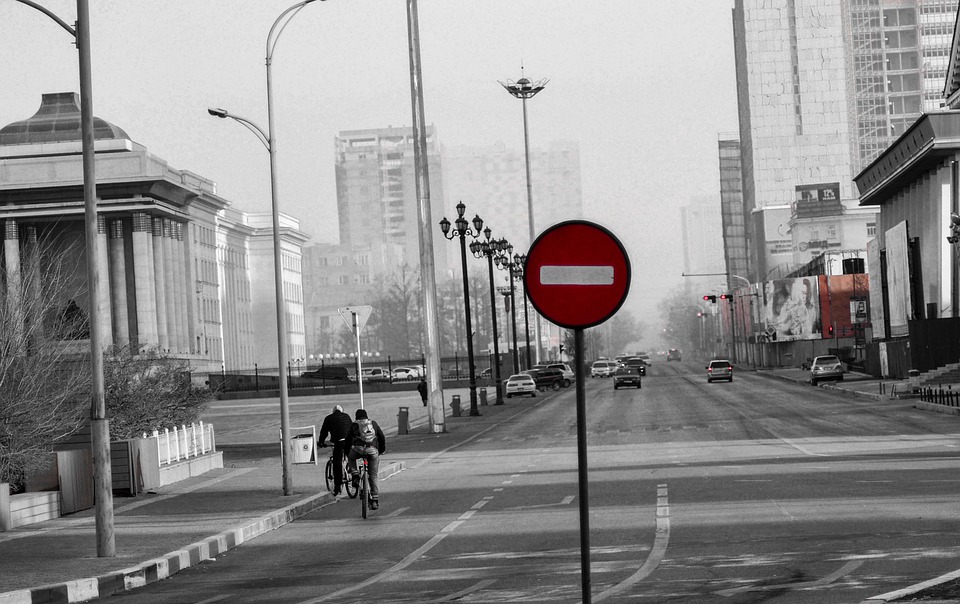Imagine this. Millions of particles floating around in the air – all smaller than the size of human hair. Thousands of particles entering our nasal pathway as we take our breath 17,000 – 30,000 times each day. These particles floating around in our body, entering our lungs and into our bloodstream. Causing havoc with our organs, sometimes changing the way they are supposed to function. Imagine this.
And then, imagine no longer. Because, unless you are living like a caveman, this is what is happening to each one of us ever day to some extent or the other. Some regions are better than others. If you are living in any city in India or Southeast Asia, you may be breathing in larger quantities of these particles.
What are these particles? What if we could see them?
These particles have a scientific name – particulate matter less than 10 micrometers, PM10 (quite intuitive!) and particulate matter less than 2.5 micrometers, PM2.5 (you guessed it right!). Released from combustion sources, vehicular emissions, construction activities, open burning among other sources, particulate matter is all pervasive.
| City | PM2.5 | PM10 |
| Boston | 34 | Not measured |
| London | 46 | Not available |
| New Delhi | 193 | 334 |
| Beijing | 152 | 562 |
High outdoor levels result in high indoor levels. According to the U.S. Environmental Protection Agency (EPA), indoor air quality can be 2 – 5 times worse than the outdoor air quality.
But wait, what is ‘high’? The World Health Organization guidelines state that the 24-hour average values should be below 25 µg/m3 for PM2.5 and below 50 µg/m3 for PM10. Represented as Air Quality Index (AQI), the inset provides values of PM2.5 and PM10 for a few major cities across the world at the time of this edit[1]. The health impacts of particulate matter are well documented. They range from asthma and other respiratory illnesses to cardiovascular diseases and a long-term risk of cardiopulmonary mortality[2].
Here is the worst part..
We are impacting our health with every breath we take and we are not even aware of it!
How do we start seeing the unseen? This is where citizen science has a role to play. Monitor your air. In addition to government monitoring stations (731 in India), low-cost sensor based monitoring is catching up in a big way. Citizens want to take charge and know what they are breathing. One of the more popular air quality sensors in the U.S. is PurpleAir. Connected to a common network, these sensors provide real-time information on the air you breathe. In addition, wearable devices such as Atmotube and Plume Labs can be strapped on to your clothing, bags, etc and brings air quality sensing closer home.
India is not far behind. While air quality sensors from companies such as Kaiterra (China), Mann+Hummel (Germany) and PurpleAir are available for purchase in India, there are several homegrown companies that also sell air quality sensors that are relatively easy on the pocket. Airveda and Oizom have developed air quality sensors for the Indian market – both for indoor and outdoor air quality monitoring. Ambee is an upcoming venture that has developed sensors for indoors and outdoors and aims to create an air quality mapping of a region. Most of these air quality sensors come with an easy-to-use dashboard where you can view your air quality from your phone.
The purpose of this edit is not endorse any single company but to let readers know what is available and what could be the possibilities.
Information leads to action!
Particulate matter is hyper-local. Government monitors are typically not very close to where you live. Since it costs upwards of $100,000, they are also very few and far in between. Your air could be impacted by what is happening close to you – whether it is the traffic near your house, construction activity or open burning. So having a monitor in your house or your community will give you a better sense of what you breathe. You can then decide when you want to take a walk or venture outside. To top that, if you are able to galvanize your community and your neighboring communities to set up air quality sensors, that is real citizen science at work. Such a network will throw up interesting trends on when pollution peaks. Maybe it is during the peak rush hours, or when the school buses enter your community or the speed breakers causing vehicles to slow down and spew more emissions at that spot. Knowing the cause also throws light on solutions.
I end with one thought. Take charge of your air!
Recognize what you are breathing. Reduce your exposure. Realize your responsibility in curbing emissions.
In our future articles, we will outline some innovative and ground-breaking technologies and solutions that exist to mitigate air pollution.
[1] Data obtained from https://aqicn.org
[2] http://www.euro.who.int/__data/assets/pdf_file/0006/189051/Health-effects-of-particulate-matter-final-Eng.pdf accessed April 2019

